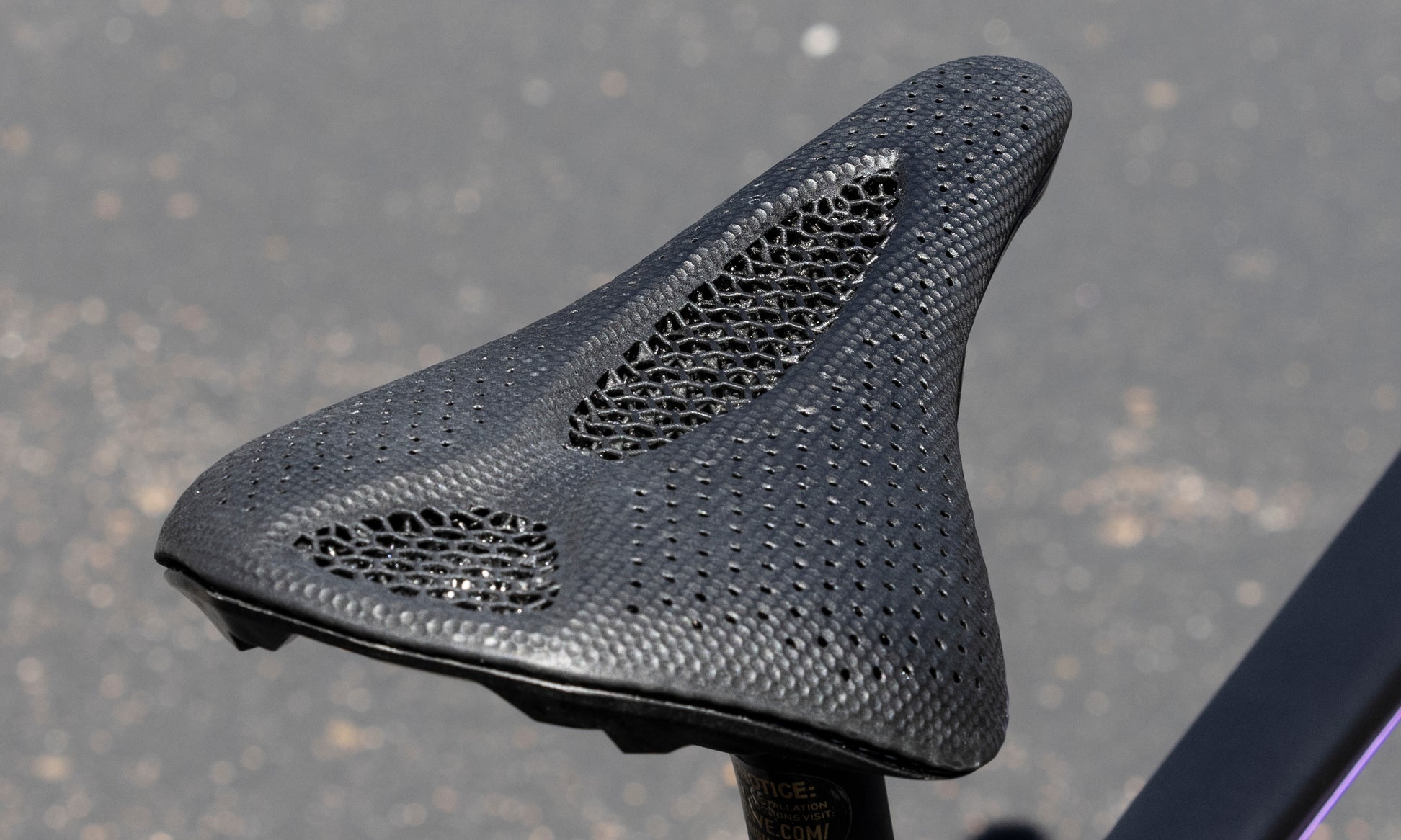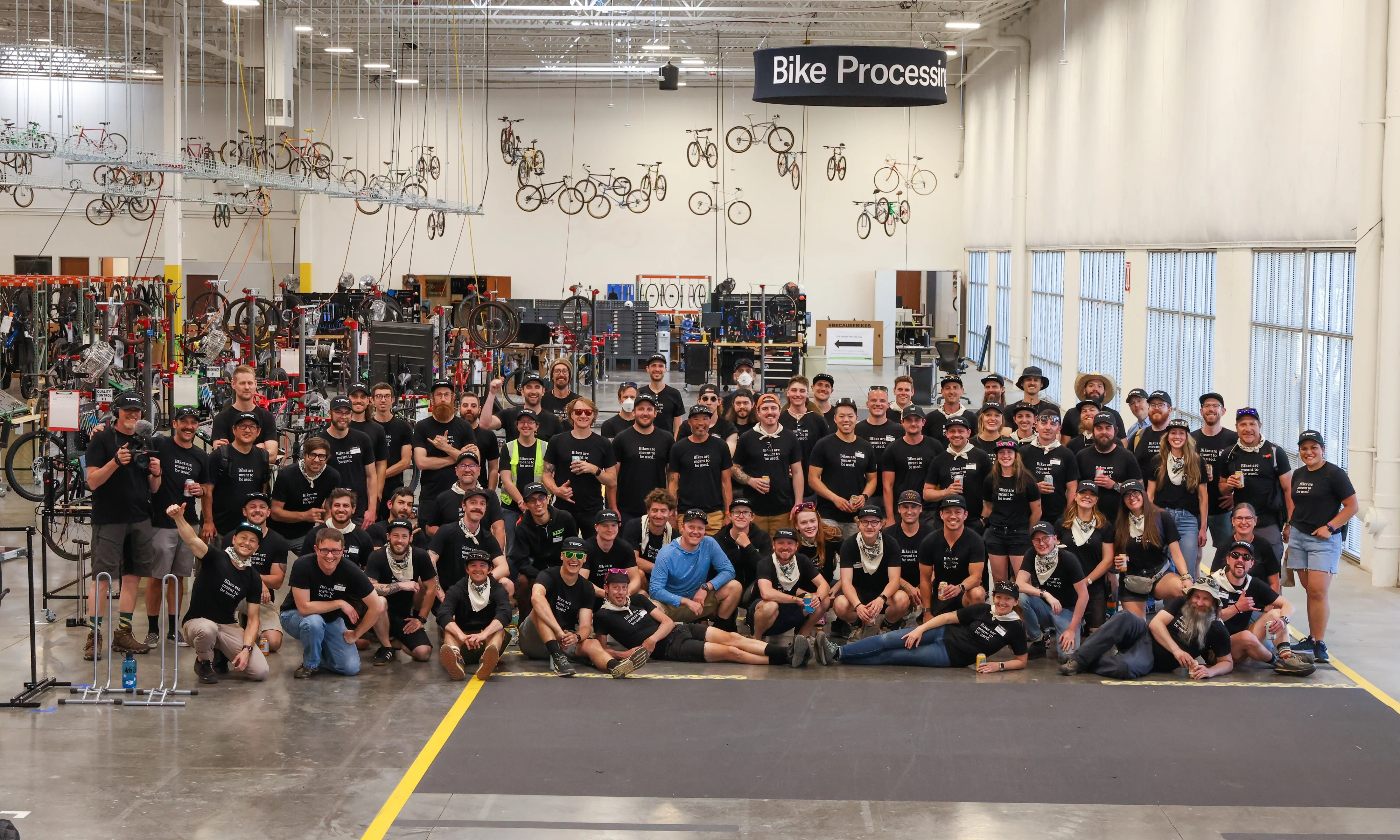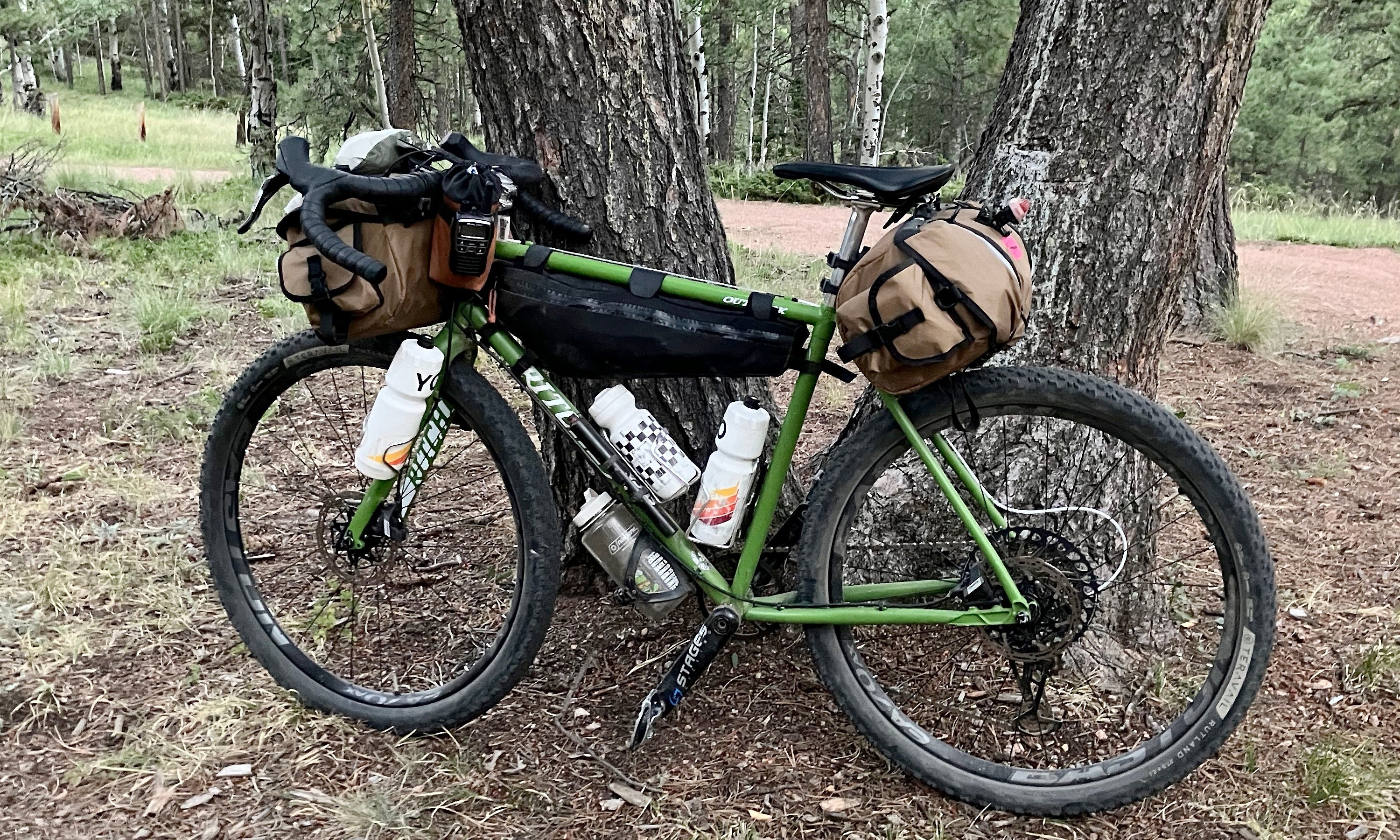I expect lots of gravel racers to copy Keegan Swenson's winning setup. Photo: htSQD/Keegan Swenson
Every year we're treated to exciting new bikes and components or novel concepts that promise a leap forward in performance. But with so many new products entering the market and countless innovative thinkers experimenting with their setups, they can’t all be hits. Only the good ideas will stick around.
So what bike tech is going to be hot in 2024? What trends are going to take off? We take a look into our (admittedly foggy) crystal ball to make some predictions for next year. Some are safe, some are bold, and some might be silly. I’m examining industry and consumer trends, upcoming product releases, top racers, and my own wishful thinking. These are the tech and trends I think will gain traction in 2024.
1. Lifetime Warranties on Alloy MTB Wheels
 Photo: Reserve Wheels
Photo: Reserve Wheels
Reserve revolutionized the carbon wheel market by introducing a lifetime warranty that promised to replace damaged rims. This perk made carbon MTB wheels a good investment, and it converted many riders who preferred aluminum due to lower replacement costs. In response, all the other major carbon wheel manufacturers had to introduce similar warranties to compete.

Reserve 30 HD AL w/ Industry 9 1/1 Hubs Alloy Tubeless 29" Wheelset
$565.99
This year, Reserve dunked on the industry again by offering the same generous warranty on its more affordable alloy wheels. If you’re a trail rider or enduro racer and you want to spend less than $1,000 on high-quality wheels, I can’t imagine picking anything other than Reserve’s HD AL wheels right now, simply because of the warranty. The other big alloy rim manufacturers (Industry Nine, Stan’s, Spank, DT Swiss, etc.) are going to have to put a similar warranty into writing to stay competitive.
2. Road Racers Using Wider/Mixed Tires
 Bike Radar spotted Egan Bernal running a 25mm front tire with a 28mm rear at the Tour. Photo: Simon von Bromley
Bike Radar spotted Egan Bernal running a 25mm front tire with a 28mm rear at the Tour. Photo: Simon von Bromley
The marginal gains war has been raging in the pro peloton for years, and one area where teams have been making major changes in recent years is in wheels and tires. The transition by many top teams to tubeless tires has been huge, allowing racers to use lower tire pressures to reduce rolling resistance and increase comfort. One interesting trend I noticed when tracking the equipment winning at the Tour de France was more riders on wider tires.

Continental Grand Prix 5000S TR 700c Tubeless Tire
$86.95

Vittoria Corsa Pro TLR G2.0 Tire 700c Tubeless
$106.99
28mm tires have become fairly common, and on many of the wide rims teams are now using, these tires often blow out to 30+mm. Peeking at various bike checks throughout the year, I’ve also noticed that some riders were experimenting with mixed tire sizes. Egan Bernal and Tadej Pogacar come to mind, with setups that use a wider tire in the rear and a narrower tire on the front.
The reasoning is pretty simple: A narrower front tire provides better aerodynamics while a wider rear tire offers lower rolling resistance (where it matters most) and increased comfort. Mismatched tires seem weird, but it’s worth trying if it does provide a marginal advantage. I think we might see a lot of riders and teams experimenting with tire setups early next season. We’ll see how many mismatched setups stick when we get to the Tour. I’m betting there will be at least a few.
For tough cobbled races like Paris-Roubaix, ~30-32mm tires will soon become the norm (Mathieu van der Poel won on 28mm Corsa Pros this year). Remember the wireless pressure control system Jumbo and DSM were touting earlier this year? Things have been suspiciously quiet since then. My guess is it didn't work. Just running wider tires that can be kept at lower pressures anyway is much simpler so most teams would likely rather go that route.
3. UDH Gravel Bikes with SRAM Transmission
 Keegan Swenson's XX SL Transmission-equipped Stigmata after his Unbound win. Photo: SnowyMountain Photography
Keegan Swenson's XX SL Transmission-equipped Stigmata after his Unbound win. Photo: SnowyMountain Photography
This year, Keegan Swenson dominated the Life Time Grand Prix for the second year in a row, and he did so on a new Santa Cruz Stigmata gravel bike equipped with SRAM’s latest T-Type Transmission MTB drivetrain.
SRAM Transmission with its direct-mount rear derailleur was one of the biggest product releases this year. It’s designed to mount to frames designed with SRAM’s UDH (universal derailleur hanger) standard, which many mountain bikes already use.
With super precise shifts that require no adjustment screws, an unmatched ability to shift under power, and extreme durability, it’s already proven itself at the highest level of XC and Enduro mountain bike racing. It seems ideal for gravel racing too, but there aren’t that many gravel bikes currently using the UDH standard.
The switch to UDH was one of the major changes Santa Cruz made to its latest Stigmata, and I expect many frame manufacturers to release similar updates very soon. This means we’re sure to see more and more gravel racers, both pros and amateurs, competing on bikes equipped with SRAM Transmissions over the next few seasons.
4. Really Good Budget MTB Forks
 There have been a lot of big improvements in fork tech over the years, and budget-conscious will hopefully benefit from more trickle down tech. Photo: SRAM
There have been a lot of big improvements in fork tech over the years, and budget-conscious will hopefully benefit from more trickle down tech. Photo: SRAM
If I can only upgrade one component on a mountain bike, I’d choose the suspension fork since it makes the biggest difference in how a mountain bike feels and performs. The big advantage of a high-end suspension fork is in the damper.
Good dampers provide more adjustability, but more importantly, they stay more composed on rough trails and under extreme conditions, increasing your traction, confidence, and comfort. Budget dampers like Rockshox's Motion Control and Fox's GRIP (NOT the high-end GRIP2) dampers get overwhelmed in rugged terrain to the point where they feel harsh or lose traction.
There’s a big problem though — good aftermarket forks are super expensive. But I think some of the major fork brands are planning to trickle down versions of their high-end fork dampers down to more budget-oriented models next year. I can't prove this, but I feel it. They have to. Also, I want to buy a new fork next season but I'm too cheap to get a top-of-the-line model.
5. Super Narrow/Flared Road Handlebars
 I expect Victor Campenaerts to test the limits of the rules next season now that he can't use his angled hoods. Photo: A.S.O/Billy Ceusters
I expect Victor Campenaerts to test the limits of the rules next season now that he can't use his angled hoods. Photo: A.S.O/Billy Ceusters
The UCI has been doing UCI things again and recently released rules limiting angled-in hoods/levers. Angled hoods have become trendy in recent years because it positions a rider’s hands closer together, reducing their frontal area and improving aerodynamics. Many riders also find the angled hood position feels more comfortable and ergonomic.
The UCI, however, plans to restrict levers set at an “extreme inclination” in the coming year ahead of further regulations in 2025. This is being done in the interest of rider safety (which is debatable). Angled hoods got popular after the UCI banned the aero supertuck/puppy-paws riding positions, so I bet there are probably already riders and teams out there looking for a similar workaround.
The easy solution is to run handlebars with extremely flared drops since the regulations stipulate that the hoods need to be in line with the drop to a certain degree. Many riders also currently use 36-38cm handlebars and we could see some start pushing the limits of the 35cm minimum handlebar width rules to try and maximize any marginal aero gains. It’ll be a lot of fun to see if banning goofy cockpit setups somehow leads to even goofier cockpit setups.
6. Big Clearance Gravel Frames & Super Wide (47-50+ mm) Tires

A fat 50mm tire with room to spare. I love it.
Roadies have been embracing wider and wider tires, but gravel has been pushing the limits of tire width for years. It wasn’t that long ago that 38-40mm tires were considered the standard. But these days, a gravel bike isn’t competitive unless it can accept 45mm tires. Many top models (e.g., the Specialized Crux) can now fit tires in the 47-50mm range, giving riders even more room to experiment. Likewise, many gravel tire manufacturers have been releasing super wide gravel tires in the 47-50mm range too.
Of course, wider gravel tires increase traction, capability, and comfort, but one advantage that some racers are talking about is how wider tires can also provide lower rolling resistance. Dylan Johnson, who might be the biggest tire nerd in gravel racing, has been using a drop bar mountain bike for many races because wider XC mountain bike tires actually roll faster than comparatively narrower gravel tires. This could potentially cancel out the weight and aero disadvantages of wider tires.
Increasing tire clearance on frames also provides the benefit of increased mud clearance too. With the last two editions of Unbound Gravel being affected by heinous mud pits, having a frame with extra tire clearance just to keep mud from gumming up your bike can be a huge advantage in a tough race.
I chose my current gravel bike because it clears 57mm tires, and I’ve been testing out a few different 50mm gravel tires over the past year. I’m pretty sure I’m going to race on 50mm tires (or wider) next season because the comfort and traction advantages are so big, and they don’t feel any slower (on gravel) than my old 40-45mm tires.
7. More 3D-Printed Honeycomb Foams

I’ve fallen in love with my 3D-printed saddle, and I’m about to drop hundreds of dollars on a couple more so all my bikes can have the same amazing comfort. The squishy honeycomb lattice foam used on my saddle is only possible with additive manufacturing, and I think it’s a matter of time before we see it spread to other bike components and accessories.
Endura has already experimented with a 3D-printed chamois, and I can see some brands experimenting with this tech or simply adding 3D-printed inserts to their existing chamois to boost comfort.
The other interesting application could be in protective wear, like MTB knee pads. It could be used to create an ultra-light, flexible, and breathable pad with high density on the outside for protection and lower density on the inside for comfort. Could it even be used in helmets?
I think a likely place we might see it used in coming years is on mountain bike grips. It’d be cool to have a lock-on style grip with 3D-printed foam that can match the weight and comfort of a thick silicon foam grip while being much easier to install and remove.
The possibilities seem limitless. What about 3D-printed tire inserts? “Elastomers” for suspension seatposts and stems? Frame protection? A lot of this is wishful thinking, and these types of products will likely be super expensive (at first), but I hope to get some new 3D-printed toys to play with soon.
8. DIY Gels and Carb Mixes
 There’s been a lot of buzz recently about the “carbohydrate revolution.” Pro racers are riding faster than ever because they’re able to intake more carbohydrates than they used to. A major factor in this change has been improved in high-carb drink mixes and gels.
There’s been a lot of buzz recently about the “carbohydrate revolution.” Pro racers are riding faster than ever because they’re able to intake more carbohydrates than they used to. A major factor in this change has been improved in high-carb drink mixes and gels.

Skratch Labs Super High-Carb Drink Mix Lemons and Limes 8-Serving Resealable Pouch
$41.95
Regular riders benefit from regularly taking in carbs on the bike too. But if you ride, train, or race a lot, buying prepackaged carb mixes and gels can get pretty expensive. Frugal riders have already been crafting homemade carb mixes and gels for years, but with so much focus on fueling in the media, I imagine that the DIY sector of performance nutrition will experience a lot of new/renewed interest this coming season.
I’ve started experimenting with homemade carb mix using bulk maltodextrin and I’ve been playing with homemade maple syrup or honey-based gels in a gel flask. There are plenty of recipes online if you’re curious. I’m a big fan of “real” food on the bike, and homemade mixes and gels just seem like a nice (and cheap) addition to my regular ride snacks.
9. Kid’s E-Bikes
 We're doomed... Photo: Commencal
We're doomed... Photo: Commencal
E-bikes are some of our best-sellers, there’s no denying that. They’re popular for road riding, mountain biking, and commuting, but one segment that E-bikes are only just starting to tap into is kid’s bikes.
It makes a lot of sense — kids are weaklings. If a cycling-obsessed parent wants to go on a bike ride with their kid, they’re generally limited to short jaunts around the neighborhood until their kid goes through puberty and gains some muscle. Add a pedal-assist motor though, and suddenly, your 10-year-old can join you on a 20-mile road ride or get to the top of a tough trail ride with lots of climbing.
Is this a good or bad thing? I have no clue. But I have a hunch that more access to E-bikes is going to make the next generation of cyclists absolute monsters. They’ll be doing multi-hour rides and focusing on handling skills early, and by the time they’re teenagers, they’ll be smoking me and all the other masters racers.
10. Eye-Searing Colors... Please?
 I always like EF's bold style. Photo: S J Hockett
I always like EF's bold style. Photo: S J Hockett
This might be a "me" problem, but I'm a bit tired of all the muted earth tones and pastels dominating the bike industry right now. So few bikes and jerseys jump out to me these days. Give me more neon pink, acid green, and fluorescent yellow. I'd like for this to happen, but don't think any big brands are actually going to risk though... 😔

























